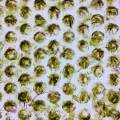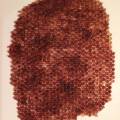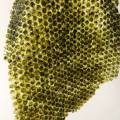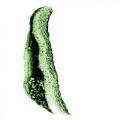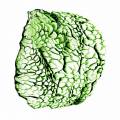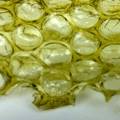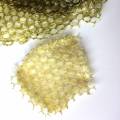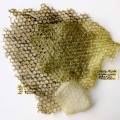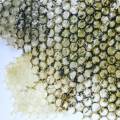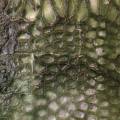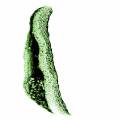Table of Contents
SENSORIAL SKIN
biomimetic research questions
How to hold up water (or liquids) in a skin?
Excess of water (humid climates, mist, …)
How to add air to closed water pockets?
biospheres (Eden)
fungi, plants (Kew)
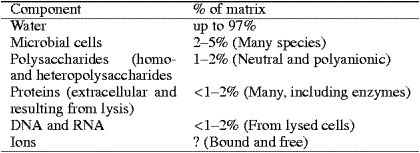
biofilm matrix:
natural algae biofilm: algae biofilm
Common name: Algae, lichen, moss
Areas affected: Trunks and stems of trees and shrubs
Main causes: Humid, damp, still conditions and poor plant vigour
Timing: Algae are more noticeable after wet weather;
mosses and lichens are present year-round, but are more noticeable in winter
mosses: Moss growing handbook
Lichens are favoured by humid, still conditions and clean air, so are often more common in rural areas and mature gardens. They are particularly adaptable as they are able to exist where nutrients, and sometimes water, are scarce. However, they grow only very slowly so, unlike moss and algae, are slow to colonise.
A lichen consist of two different organisms engaged in a symbiotic relationship. One partner is a fungus, whose job it is to anchor the lichen to the branch or stone where it's growing. The other is cyanobacteria (formerly known as blue-green algae), that turn sunlight into food for the lichen. They spread by either spores or tiny plant bits that travel on the wind and use branches and trunks only for support.
Lichens need sunlight to grow. Dying trees with fewer leaves to shade their branches provides lots of sunlight. Lichens are also good for your health, because their presence is a sign of clean, healthy air, as lichens don't like dirty, polluted air.
Most lichens are more difficult to grow than mosses. A Cladonia, probably C. pocillum, sometimes spreads over mosses on well-drained basic soil on the top shelves. Small Collemas can be grown, and have appeared uninvited on intermittently wet chalk or clay, and on mounted limestone cultures. These are more of a curiosity than a nuisance, though they can discourage mosses. Some Cladonias, Collemas and other large lichens, especially Peltigeras, can be grown in a similar way to mosses. (p70)
Mosses:
- visible breathing pores on the upper side of the leaf of a plant (stomata)
- wet and shady environment
- dripping water
- spraying from above, never water in the soil
- simulate rain for watering
- acid environment
- optimum temperature for growth at around 10-15°C
- in open or drier places, and in clearings which get more sun, is a different flora. P. juniperinum is very common, often among colourful lichens of the genus Cladonia. With it are likely to be Campylopus introflexus and Pohlia nutans.
- in vitro and test-tube cultures (vanaf p56)
- sterelize mosses and grow them on Cleargel in petri-dish
Algae will form on hard surfaces or plants, especially in shady, wet or poorly drained conditions. They proliferate in water such as ponds or water butts where light and nutrients are available.
Usefull biomimetic info for an algae sensorial skin:
- Single-celled algae, especially blue-green ones, are also everywhere. They are especially vigorous on chalk and limestone. They re-appear after drought, but take a long time to get going again, so in frequently dry cultures they are less of a nuisance. Lime-rich or nutrient-rich cultures, even mounted cultures, if they are continuously wet for a few weeks, are often discoloured by them, and many mosses which can spread rapidly on fresh soil fail to go on doing so after a time. It is probable that some algae, especially blue-green ones, discourage competitors by chemical means. For this reason, a moss that is not spreading on an alga-contaminated culture will often benefit from replanting. Also, a culture covered in clingfilm has a very limited life, as little as a couple of weeks, before algae spread across it. However a pot of soil can be enough to break up the soil surface and wash away most of the algae, allowing the moss to go on spreading. Clay pots, especially if usually damp, soon develop a green film of algae or accumulated lime around the rim. This too is worth scrubbing off occasionally with a wet thumb or an old toothbrush, or the plant put in a clean pot, if only for appearance’s sake. This can a time-consuming task.
On the other hand, all mosses must compete to some extent with algae, and some grow quite successfully in cultures covered with them. The gelatinous algae which form rubbery translucent olive-green lumps on limestone or chalk soil, often appear in suitable cultures. They are more of a curiosity than a nuisance. The algae in this collection might be as varied and interesting as the mosses. (p69)
Encouraging growth
Algae, lichens and moss: encourage their growth on stone troughs or walls by painting the surface with organic materials, including a weak yoghurt solution.
Algae, lichens, liverworts and mosses all require a moist environment to reproduce so keeping the area damp and shaded will encourage them to flourish.
When transplanting mosses and liverworts, keep them wet at all times.
design experiments
Experiment 1: how to keep up water on the surface of the skin, so that the algae can grow?
Membrane-based architectures enable optimization of charge transport and electrochemical potential gradients in artificial photosynthesis. https://www.researchgate.net/publication/317032127_Membranes_for_artificial_photosynthesis
artificial photosynthesis and CNT embedded polymer film
algae biofilm
Experiment 2: design of skin-shells in Blender, based upon pollen textures.
Yhe idea is to print (3D print?) these textures as a flexible, hollow jacket/bag that can be clad around the torso of the beehive. The bag would than be filled with photosynthesising micro-algae that provide energy for the sensors in the beehive:
Experiment 3: research 'luciferase' enzyme (glow in the dark)
JRC/Balint
For the Sensorial Skin project I will collaborate with the Open BioLab in Brussels and I’ll work together with a masterstudent in molecular biology. We will research if we can work with bacterial colonies (living on the outside of the beehive) that are sensible to pollution (or pesticides) brought over by the bees when they come back from their foraging flights.The bacterial colonies should react by expressing a change of color.
I did similar research in vitro in the lab - and the principle works - but for now we will work on a setup for outside. We are now looking into the direction of photosynthetic bacteria (Cyanobacteria) but maybe we'll end up with synthetic biology.

